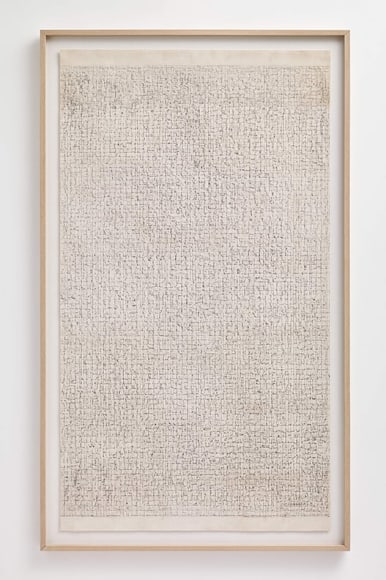
Chung Sang-Hwa is considered a leading figure of the Korean Tansaekhwa, or “monochromatic painting,” which comprises a group of artists who emerged in Korea in the 1960s, including Lee Ufan, Park Seo-Bo, and Ha Chong-Hyun. Tansaekhwa developed in the wake of Korea’s emergence as global power following the country’s liberation from Japanese rule and the aftermath of the Korean War. The country’s postwar years marked an upsurge of artistic expression as the country’s independence inspired a renewed global awareness and cultural exchange. Tansaekhwa artists became exposed to major international art movements, such as Abstract Expressionism in the United States, Art Informel in France, and Gutai in Japan. While Tansaekhwa reflects a sense of globalism and appears aligned with Western minimalism, the art of Chung Sang-Hwa and his contemporaries remains grounded in doctrines of Eastern philosophy. The Tansaekhwa artists’ meditative and monastic outlook on artistic creation reflects tenets of Taoism, Buddhism, and Neo-Confucianism, as they contemplate issues surrounding civic disorder and political turbulence through a deliberate engagement with philosophical and spiritual ideologies. Chung Sang-Hwa was born in Yeongdeok, Gyeongsangbuk-do, Korea in 1932. He graduated from the oil painting department of Seoul National University in 1956. Chung’s work belongs to numerous museum collections, including The Art Institute of Chicago, Chicago; Hirshhorn Museum and Sculpture Garden, Washington, DC; the Guggenheim Museum of Art, New York; the Samsung Leeum Museum of Art, Seoul; the Seoul Museum of Art, Seoul; the National Museum of Modern Art, Tokyo; the Shizuoka Prefectural Museum of Art, Yada Shizuoka City; the Fukuoka Asian Art Museum, Fukuoka; and the Musée d’Art Modern de Saint-Etienne, France. Chung Sang-Hwa lives and works in Gyeonggi Province, Korea.

